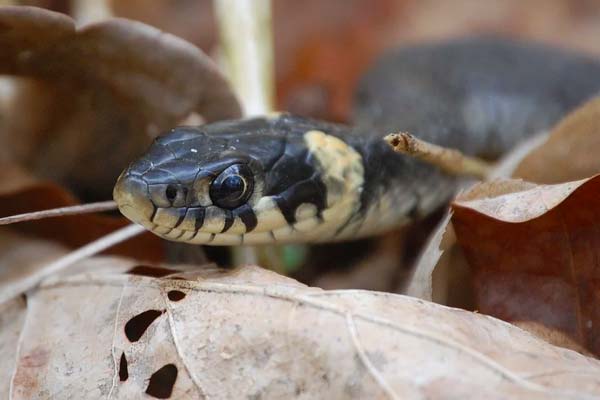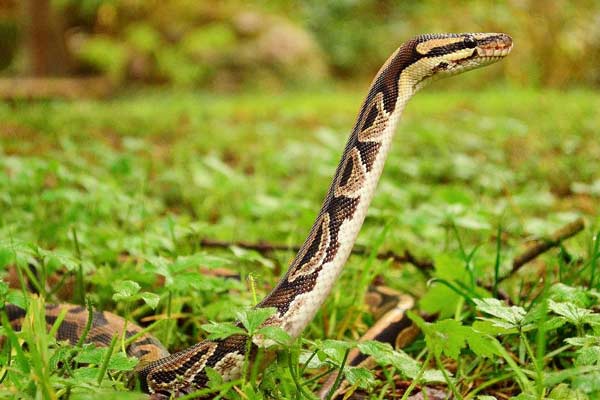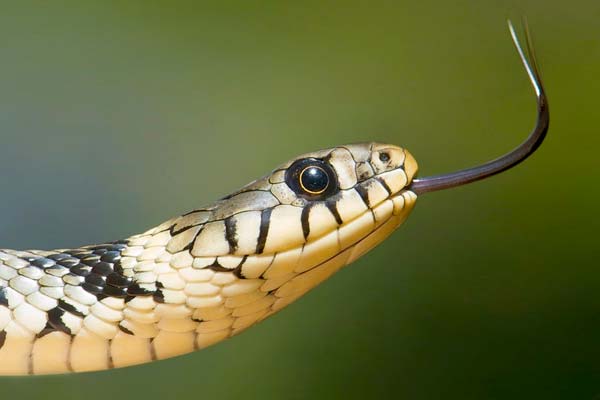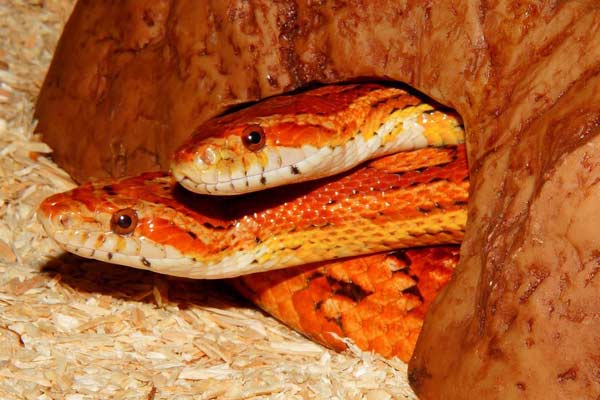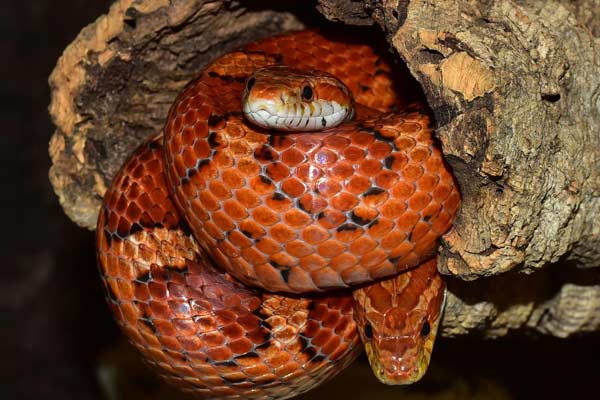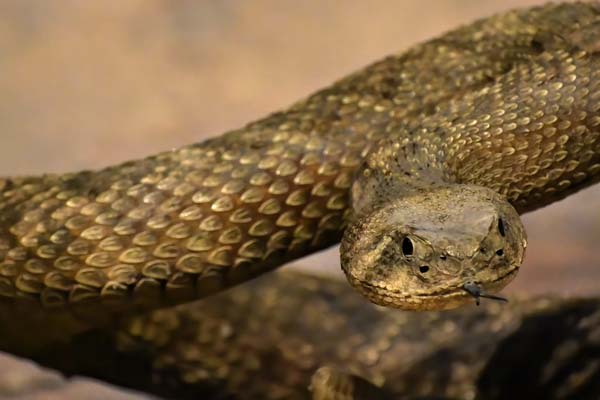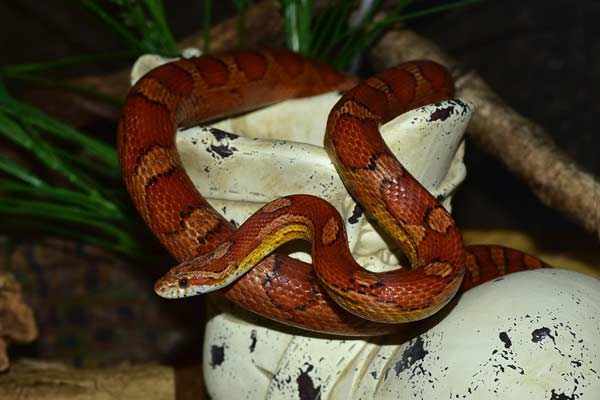Snake Hiding: How and Why Snakes Hide Themselves
Snake-hiding behavior is a common trait observed among various species of snakes. Snakes hide in various places, such as under rocks, burrows, and inside tree hollows. This behavior is of significant importance to snakes as it helps them to avoid predators and protect themselves from harsh weather conditions.
This article aims to provide information on snake-hiding behavior and help readers understand why snakes hide. The article will also provide tips on locating a hiding snake and safely luring it out.
Understanding snake-hiding behavior is crucial for anyone who owns a pet snake or is interested in exploring where snakes may be outdoors.
Reasons Why Snakes Hide
Snakes are known to hide for various reasons, and as a responsible reptile keeper, it is essential to understand these reasons. Here are some of the most common reasons why snakes hide:
Natural Instincts and Survival Strategies
Snakes instinctively hide as a survival strategy, utilizing camouflage to blend seamlessly with their environment. This enables them to evade predators by making it challenging to spot them. Moreover, hiding serves as a means for snakes to conserve energy and avoid potential threats.
Thermoregulation and Humidity Requirements
Snakes are ectothermic, meaning their environment regulates their body temperature. As such, snakes hide to regulate their body temperature and maintain their preferred humidity levels. Inadequate temperature and humidity can cause stress and discomfort, leading to health issues.
Safety and Predator Avoidance
Snakes hide to avoid predators and stay safe. They have evolved to be experts at hiding and using their surroundings to their advantage. Hiding spots provide snakes with a sense of security and safety, and they are less likely to move around when they feel threatened.
Stress, Discomfort, or Illness
Snakes may hide in response to stress, discomfort, or illness. When a snake is unwell, it instinctively hides to conserve energy and facilitate recovery. Similarly, changes in the environment, like a new enclosure or the presence of other animals, can induce stress in snakes, leading them to seek hiding spots.
Hunting and Ambush Tactics
Some snakes, such as rat and king snakes, use hiding as a hunting strategy. They hide, wait for their prey to come close, and strike quickly. Hiding allows them to conserve energy and remain undetected until the right moment.
Common Hiding Places for Snakes
Snakes hide in various places, both in natural environments and human habitats. Understanding their hiding places can help prevent unwanted encounters and ensure safety.
In Natural Environments
In natural environments, snakes typically hide in places that provide shelter, warmth, and a food source. Here are some common hiding places for snakes in natural environments:
- Forests, woodlands, and jungles: Snakes often hide under logs, rocks, and fallen leaves to keep warm and hide from predators. They may also climb trees and hide in tree hollows.
- Grasslands, prairies, and meadows: Snakes in these environments may hide in tall grass, shrubs, or under rocks to stay hidden from predators.
- Wetlands, marshes, and swamps: Snakes in these environments may hide in burrows or under vegetation near the water’s edge.
- Caves, rock crevices, and burrows: Snakes may hide in these natural structures to regulate their body temperature and stay hidden from predators.
In Human Habitats
In human habitats, snakes may hide in places that mimic their natural hiding spots. Here are some common hiding places for snakes in human habitats:
- Wall voids and crawl spaces: Snakes may enter homes through small openings and hide in wall voids and crawl spaces.
- Attics, basements, and cellars: Snakes may hide in these areas to stay warm and avoid predators.
- Heating and cooling units: Snakes may hide in outdoor heating and cooling units to stay warm or cool.
- Cluttered areas or debris piles: Snakes may hide in cluttered areas or debris piles to stay hidden from predators.
- Under appliances, furniture, or inside hiding spots: Snakes may hide under appliances, furniture, or inside hiding spots such as boxes or bags.
Keeping homes and yards clean and clutter-free is essential to prevent snakes from hiding in human habitats. Sealing small openings and cracks in walls and foundations can also prevent snakes from entering homes.
If a snake is already hiding in a home, using a snake trap or glue trap can effectively capture it. Luring snakes out of hiding spots can be done by placing snake lures or basking spots near the hiding spot. If a snake infestation is suspected, seeking professional help for removal is recommended.
Hiding Behavior of Specific Snake Species
Snake species have unique hiding behaviors influenced by their natural tendencies, environment, and temperament. Here are some of the common hiding behaviors of specific snake species:
Ball Python Hiding Behavior
Ball pythons are known for their shy and reclusive nature. They are nocturnal and prefer to hide during the day. Ball pythons often hide in tight spaces, such as burrows, crevices, and hollow logs.
They also like to hide in enclosed spaces, such as boxes, caves, and hide boxes. Ball pythons may become stressed if they cannot access a suitable hiding spot.
Corn Snake Hiding Behavior
Corn snakes are also nocturnal and prefer to hide during the day. They are known for their climbing ability and may hide in high places, such as tree branches and vines.
Corn snakes may also hide in tight spaces like rock crevices and burrows. They are generally less shy than ball pythons and may become more active in the presence of their owners.
Boa Constrictor Hiding Behavior
Boa constrictors are typically more active during the day than at night. They may hide in enclosed spaces, such as hollow logs, boxes, and hide boxes. Boa constrictors may also hide in tree branches and under rocks. They are generally more tolerant of handling than ball pythons and corn snakes.
Other Notable Species and Their Hiding Tendencies
- Venomous Snakes: Venomous snakes, such as rattlesnakes and copperheads, may hide in rocky areas, brush piles, and under logs. They may also use their venomous bite as a defense mechanism if they feel threatened.
- Non-venomous Snakes: Non-venomous snakes, like rat snakes, king snakes, and garter snakes, hide in various locations like trees, bushes, and underground burrows.
In general, snakes hide to feel safe and secure. Providing them with appropriate hiding spots in their enclosure is vital for their physical and mental well-being.
Signs of Snake Presence and Hiding
When identifying snakes’ presence and hiding in and around your home, it is essential to be aware of the signs. Here are some of the most common signs that indicate the presence of snakes.
Shed Snake Skins
One of the most common signs of snake presence is shed skin. Snakes shed their skin periodically, and their shed skins can be found in various places, including basements, attics, and crawl spaces. These skins are usually translucent and have a scaly texture. If you find shed skins, it indicates that snakes have been in the area.
Snake Droppings or Tracks
Another sign of snake presence is droppings or tracks. Snake droppings are usually small and look like bird droppings. They can be found near snake-hiding places, such as basements or attics. Snake tracks are also a good indication of their presence. Snakes leave tracks resembling two parallel lines in the dirt or dust.
Unusual Sounds or Hissing Noises
Hissing sounds are another sign of snake presence. You may hear strange hissing noises inside your walls and floorboards, where these reptiles could be hiding and calling home. Snakes also make other sounds, such as rattling or buzzing, to warn potential predators or prey.
Sightings or Movements of Snakes
The most obvious sign of snake presence is a sighting or movement of a snake. Snakes are generally shy and try to avoid humans, but if you see one, it indicates that they are in the area. Snakes can move quickly and smoothly, making them difficult to catch or trap.
Camouflaging and Snake Hiding
Snakes are excellent at camouflaging themselves to blend in with their surroundings. They can hide in small spaces, like cracks in walls, gaps under doors, or in basements, attics, and crawl spaces. They also hide in tall grasses, leaf litter, and fallen logs in yards.
Snake Traps
If you suspect snakes hiding in your home, you can use snake traps to catch them. Snake traps are designed to lure snakes into the trap, where they get stuck and can be removed safely. It’s crucial to use humane traps that will not harm the snakes.
Safety Precautions and Snake Removal
When dealing with snakes in residential areas, it is essential to ensure the well-being of oneself and the snake, minimizing the risk of harm.
Preventive measures can also be taken to minimize snake entry into the living space. Humane snake removal techniques can remove the snake from the living space. Professional assistance can also be sought if needed.
To minimize the risk of snake bites, it is recommended to wear appropriate clothing such as over-the-ankle hiking boots, thick socks, and loose-fitting long pants. When walking through wild areas, it is important never to go barefoot or wear sandals. When hiking, stick to well-used trails if possible.
To prevent snakes from entering living spaces, it’s crucial to eliminate potential hiding spots like tall grass, overgrown shrubs, open storage, boxes, water pools, firewood containers, and broken gutters. Additionally, sealing cracks and gaps in the foundation and walls is recommended.
If a snake is discovered indoors, humane removal techniques can be employed. One-way doors made of aluminum window screens can be used to facilitate the snake’s exit without allowing reentry. These screens are placed at the snake’s entrance, suspended a few inches off the ground.
Professional assistance should be sought in cases involving venomous snakes or situations deemed too hazardous. Local professional snake removal services provide safe and humane removal options.
Encouraging Snakes to Come Out of Hiding
Encouraging a snake to come out of hiding can be a delicate process, but a few techniques can coax them out safely and effectively.
Creating suitable habitat conditions, providing appropriate hiding spots or hide boxes, and using gentle techniques to coax the snake out are ways to encourage snakes to come out of hiding.
Creating suitable habitat conditions is one of the most important things to consider when encouraging snakes to escape hiding. Snakes require a suitable habitat that provides them with the necessary resources to thrive.
This includes food, water, shelter, and a comfortable temperature range. The snake may only come out of hiding if the habitat is suitable.
Providing appropriate hiding spots or hide boxes can also encourage snakes to come out of hiding. Snakes are naturally shy and prefer to hide in small, dark spaces.
Providing them with a hide box or other hiding spots can make them feel more comfortable and encourage them to come out of hiding. The hide box should be placed in a quiet area away from foot traffic and other disturbances.
Using gentle techniques to coax the snake out is another way to encourage them to come out of hiding. This can include using a snake lure or handling training.
Snake lures are designed to mimic the scent of prey, enticing the snake to come out of hiding. Handling training can help the snake become more comfortable with human interaction, making it less likely to hide.
If the snake is not responding to these techniques, professional help may be necessary. A professional snake handler can safely and effectively coax the snake out of hiding without causing harm to the snake or anyone else. It is crucial to remember that snakes are wild creatures and should be handled with respect and caution.
FAQs about Snake Hiding
Why Is My Snake Always Hiding?
It’s normal for snakes to hide as it’s part of their natural behavior. Snakes hide for various reasons, including seeking security, regulating temperature, reducing stress, shedding skin, and avoiding overstimulation. If your pet snake is always hiding, it may indicate that it’s not feeling safe or secure in its enclosure.
Ensure the enclosure is appropriately sized and has appropriate hiding spots to give your snake a sense of security. Also, ensure that the temperature, humidity, and substrate suit your pet snake’s species.
How Can I Get My Snake to Come Out of Hiding?
It’s essential to remember that forcing your snake to come out of hiding can cause stress and harm. Instead, ensure that your snake’s enclosure has appropriate hiding spots and that the temperature, humidity, and substrate suit your pet snake’s species.
You can also try to entice your snake out of hiding by offering food or changing the enclosure’s lighting. Avoid handling your snake too frequently or roughly, as it can cause stress, leading to hiding.
Is It Normal for Ball Pythons to Hide All the Time?
Yes, Ball Pythons are known for their hiding behavior, and it’s normal for them to spend most of their time hiding. Ensure that your Ball Python’s enclosure has appropriate hiding spots and that the temperature, humidity, and substrate suit their species. It’s also important to avoid handling your Ball Python too frequently or roughly, as it can cause stress, leading to hiding.
Conclusion
Snakes have evolved to hide and camouflage themselves in their natural habitat, using tactics like venomous bites and camouflage for protection.
Snakes are instinctive to hide even in captivity, so providing hiding spots in their enclosure is crucial to support this behavior. Snakes hide for various reasons, including stress, thermoregulation, brumation, large enclosure areas, and the risk of getting stuck.
Understanding these factors helps coax a hiding snake out of its hiding spot. If you suspect snakes in your home, take precautions like sealing gaps, removing food sources, and keeping your yard clean.

